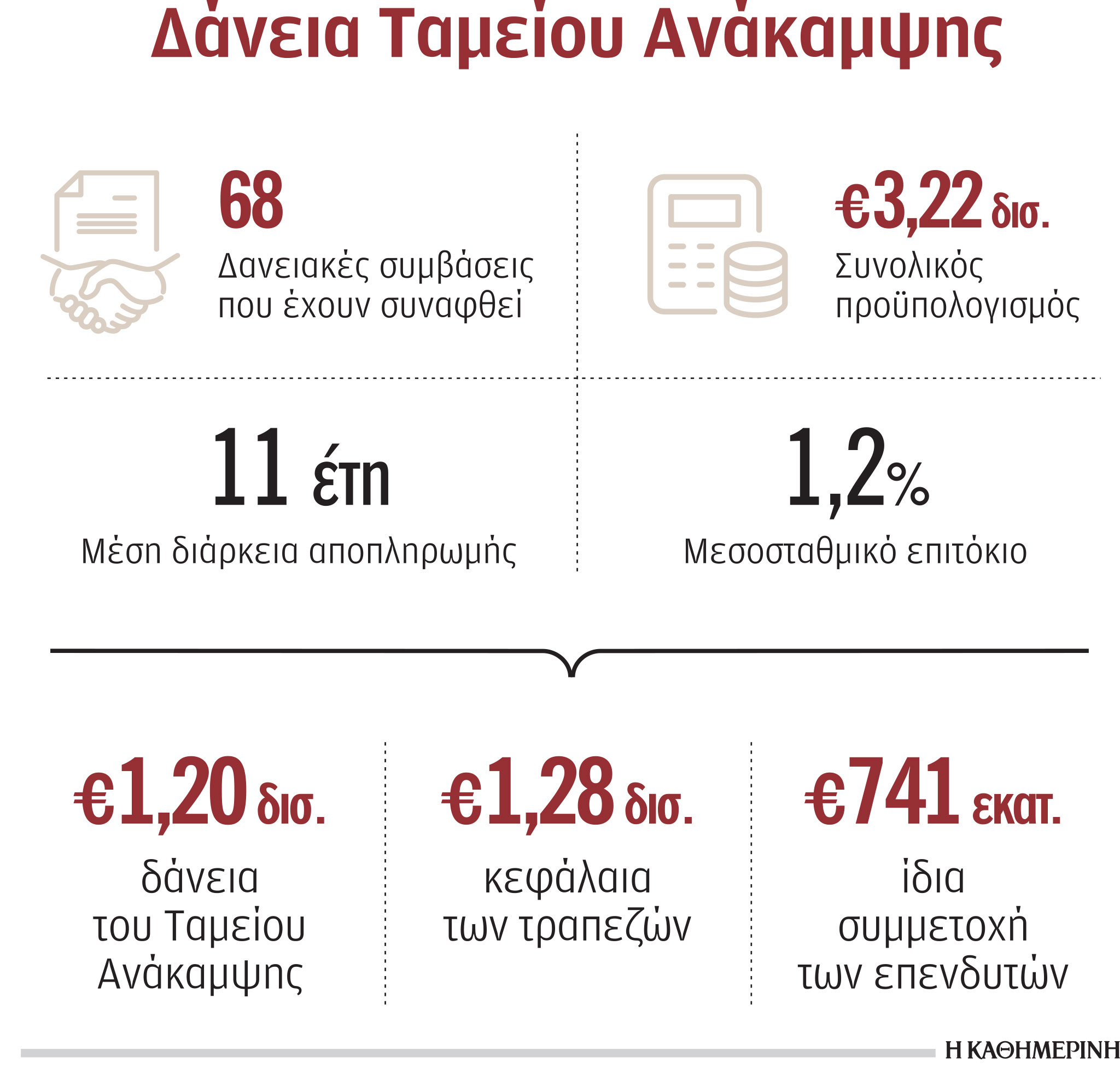
According to the latest figures released by the Ministry of Finance, private investment lending from the Recovery Fund is proceeding at a rapid pace.
According to them, until December 30, 2022, 68 loan agreements were concluded., the budget of the investment project is 3.22 billion euros. Of this amount, 1.2 billion euros are loans from the Recovery Fund, 1.28 billion euros – loans from commercial banks, and the remaining 741 million euros – the share of investors.
Just two months earlier, on October 30, 2022, 41 agreements were signed with an investment project budget of EUR 1.8 billion, of which EUR 824 million was the participation of loans from the Recovery Fund. Thus, in two months, contracts increased by 27, the budget of contracted investment projects by 1.4 billion euros and the participation of the Recovery Fund by 400 million euros.

Interest on the loan portion of the Recovery Fund is reasonable, as the loans are granted on concessional terms. According to the Ministry of Finance, the average interest rate on the concluded loan agreements is 1.2%, and the average loan maturity is 11 years. However, here, too, interest rates are rising. In October, an average interest rate of 0.9% was calculated. Of course, bank lending rates for businesses are much higher. According to yesterday’s data from the Bank of Greece, in November it amounted to 4.5% -5%.
By the end of 2022, 68 loan agreements were signed with an investment project budget of $3.22 billion.
In total, until the end of last year, 291 investment projects were submitted for loans from the Recovery Fund with a total budget of 10.53 billion euros. Of these, 4.5 billion euros come from loans from the Recovery Fund, 3.51 billion euros from banks and 2.52 billion euros from equity participation of investors.
The above mentioned projects are at different stages envisaged under Greece 2.0 (e.g. pre-approval, appraisal, approval, contracting) and relate to different sectors of the economy (industry, retail, investment in electricity generation – RES, telecommunications, tourism). and services), the Ministry of Finance said in a statement.
It is also noted that out of 291 investment proposals, 167 in the amount of 2.25 billion euros come from small and medium-sized enterprises.
Deputy Finance Minister Thodoros Skilakakis said: “The lending component of the National Recovery and Resilience Plan has been a hugely successful development tool, as evidenced by its implementation data. There is a lot of interest from the investment community, as during one half year (the first loan agreement was signed on 06/30/2022) 291 proposals were submitted with a total budget of more than 10.5 billion euros, and investments are geographically dispersed in more than 100 municipalities across the whole country. In fact, the loan agreements that have been signed include many industrial and tourism investments that contribute to stimulating the local economy, while the specific instrument also plays a very important role in the transition to green energy.
As the largest and fastest investment vehicle the country has ever had, the Recovery Fund’s loan portion is much more capable as it can cover investment projects totaling around 30 billion euros.”
At 5 billion net flow of business financing in the 11th month
Banks expect strong credit growth approaching double digits (around 10%) in 2022 in terms of business loans, which will be a year of high new payments with a focus on loans for investment purposes as well as for working capital.
Already in November, data released by the Central Bank shows that the annual credit expansion rate reached 10.4%, and the net inflow of financing for the 11 months from January to November is close to 5 billion euros, while the balance of business loans is 68.7 billion euros. billion euros.
It should be recalled that the net funding flow reflects new repayments after deducting loan repayments, which, it should be noted, were high in both October and November, which limited the net funding flow. Net funding inflows are expected to be positive in December as banks accelerate approval of new loan applications as the year closes, resulting in traditionally a month of high disbursements at the end of the year.
The big patient remains the home loan, which, despite a timid recovery in new loans with new repayments estimated at €1.2 billion for the whole of 2022, remains in negative territory with a funding rate of -3%. The reason is high loan repayments, which exceed new repayments, as well as a reduction in the loan portfolio of banks due to securitization, which prevailed in the first months of the year. It should be noted that the balances of mortgage loans remaining in banks decreased to 29.8 billion euros, as another 24 billion euros were transferred through securitization and are owned by funds. Finally, consumer loans, which show a strong recovery in 2022, are 8.8 billion euros, with a net inflow of financing of 129 million euros in the 11 months from January to November.
In general, credit expansion for the entire private sector, including loans to both households and businesses, was 5% at the end of November.
Source: Kathimerini
Lori Barajas is an accomplished journalist, known for her insightful and thought-provoking writing on economy. She currently works as a writer at 247 news reel. With a passion for understanding the economy, Lori’s writing delves deep into the financial issues that matter most, providing readers with a unique perspective on current events.